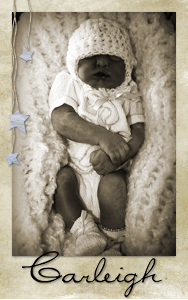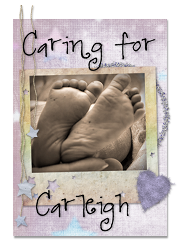Anencephaly is one of the most common neural tube defects. A neural tube defect (NTD) is any of a group of congenital abnormalities involving the brain and spinal cord caused by failure of the neural tube to close properly during early development. The neural tube is a narrow sheath that folds and closes between the 3rd and 4th weeks of pregnancy to form the brain and spinal cord. Anencephaly occurs when the "cephalic" or head end of the neural tube fails to close, resulting in the absence of a major portion of the brain, skull, and scalp. Babies born with anencephaly are usually missing the forebrain and cerebrum. Any brain tissue that is present is often exposed (not covered by bone or skin). The eyes of these babies usually protrude some as the eye sockets are not properly formed. Anencephaly is the most severe and fatal form of NTDs.
 There is no known cause for anencephaly and no cure or treatment. A combination of environmental and genetic factors is thought to have a part in the development of this condition. Environmental factors may include a folic acid deficiency, diabetes, medications, high temperatures, and chemicals. Folic acid is known to help prevent all NTDs. NTDs develop before a woman even knows she is pregnant so it is important for all women of child-bearing age to take at least 400 mcg of folic acid every day. Studies show that women who have had one child with a NTD have a 3% risk of having another child with one. Taking high doses of folic acid before and during pregnancy can reduce this risk to 1%.
There is no known cause for anencephaly and no cure or treatment. A combination of environmental and genetic factors is thought to have a part in the development of this condition. Environmental factors may include a folic acid deficiency, diabetes, medications, high temperatures, and chemicals. Folic acid is known to help prevent all NTDs. NTDs develop before a woman even knows she is pregnant so it is important for all women of child-bearing age to take at least 400 mcg of folic acid every day. Studies show that women who have had one child with a NTD have a 3% risk of having another child with one. Taking high doses of folic acid before and during pregnancy can reduce this risk to 1%.Anencephaly occurs in about 1 out of every 1000 births. It is usually diagnosed by the AFP (Alpha-Fetoprotein) test, which is part of the Quad screen or Triple screen that many women receive. The AFP test can done between 15-20 weeks of pregnancy. Alpha-Fetoprotein is made by the baby's liver and excreted through urine into the amniotic fluid. Once in the amniotic fluid it crosses the placenta and enters the bloodstream of the mother. If a baby has a NTD or an abdominal wall defect, more Alpha-Fetoprotein may leak out which will cause the AFP test to be elevated.
Anencephaly can also be diagnosed by ultrasound as early as 10 weeks. A transvaginal ultrasound may be better at diagnosing anencephaly before 16 weeks than the standard abdominal ultrasound. Anencephaly is a malformation which is very easy to see on an ultrasound scan. The likelihood of a misdiagnosis on an ultrasound after the 16th week is small. Usually a level 2 ultrasound is ordered after the AFP test comes up abnormal.
Amniocentesis is another test that may be recommended. This test is done around 16-18 weeks. Before amniocentesis is attempted an ultrasound is done to estimate gestational age, determine the position of the baby and placenta, and determine if enough amniotic fluid is present. This is an invasive test used to detect chromosomal disorders and other birth defects through chromosome analysis and measuring AFP levels. Amniocentesis involves inserting a needle through the abdominal and uterine wall of the mother and into the amniotic sac. A sample of the amniotic fluid is removed and sent to the lab. The lab will exam the amniotic fluid for fetal cells, which are grown in a culture, to determine if a genetic disorder exists. Results can take anywhere from 7-14 days.
Polyhydramnios (increased amniotic fluid aka poly) is a common occurrence in anencephaly pregnancies. It is caused by the poor swallowing reflex of the baby. With this condition there are increased risks. Amniocentesis can be performed to remove some of the excess fluid in some cases, but generally poly is just monitored through ultrasounds and fundal measurements.
Many anencephaly pregnancies often go past the due date as their is no pressure on the cervix from the head of the baby. Delivery of babies with anencephaly can be done vaginally or c-section. A birth by c-section will increase the likelihood of the baby being born alive and surviving some time outside the womb. During a vaginal delivery it is important to leave the amniotic sac intact if possible to help protect the head during delivery. This will increase the likelihood of the baby being born alive.
Most textbooks will say that babies born with this condition are blind, deaf, unconscious, and unable to feel pain. They say that responses to touch or sound are just reflexes and nothing more. While this may be true in some cases, if you talk to families who have carried their babies to term and that were born alive, they will tell you a different story. Most babies who survive to be born are born alive and live anywhere from a few minutes to a few days. Rarely babies live for several weeks or longer. A small number of babies with anencephaly have additional congenital anomalies and they are more likely to be girls than boys. Only 5% of babies with anencephaly are carried to term.
Organ donation is a controversial subject with babies that have anencephaly. Only rarely are anencephalic babies able to donate organs. The reason for this is the law is specific about who is able to be a donor. Only those who have been declared " brain dead" can donate organs. Typically a "brain dead" person will have organs that are healthy enough to harvest and organs that will function well. The criteria used to define "brain death" cannot usually be applied to children under 7 days old. Anencephalic infants, despite having severe brain deformities due to lack of development, are not by definition "brain dead." As the rudimentary function of the brain stem slowly loses its function, other organs may cease to function or become damaged prior to the heart failure. Since time of brain death cannot be accurately determined many places will not allow parents to donate their baby's organs. Although donation of heart valves and corneas is possible if certain criteria are met.


























